‘You have two killers in the air’: India’s other deadly pandemic
Twenty-two of the world’s most polluted cities are in India, where deadly air plus COVID-19 is putting millions of people at risk – just by breathing.
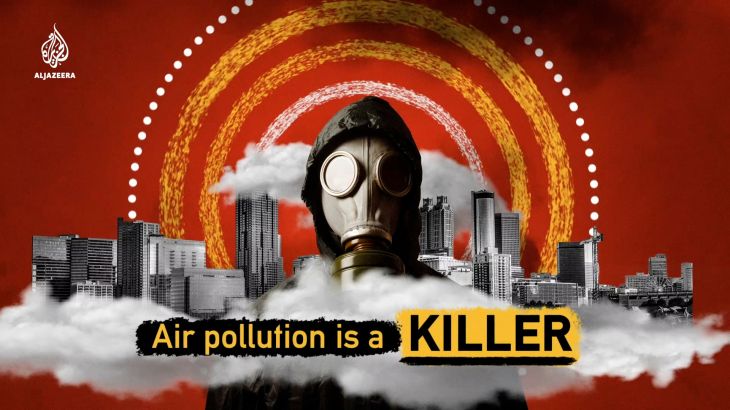
A deadly peril is smothering our cities, killing four times as many people in one year as COVID-19. Across the world nearly nine million died from it in 2018, and in India, it claims the life of one child every three minutes.
The peril is pollution and the victims have died simply by breathing in the air around them.
Keep reading
list of 4 itemsIs nuclear power a problem or a solution?
Pulling the plug on pipelines: Environmental wins against big oil
Will we be able to flatten the climate curve?
Polluted air. Nine million dead. And the source of the toxic fug engulfing cities? Fossil fuels, mostly.
Greenhouse gas emissions from coal, oil and gas are simultaneously forcing global warming, while doing a hit-and-run number on city populations through the release of tiny poisonous particles. Scientists call the most deadly of these PM2.5s – they penetrate deep into the lungs and can lead to lung cancer, coronary heart disease, strokes and early death. Particles that are 2.5 microns or smaller are considered especially dangerous to human health because they get through many of our bodies’ defences such as nose hair or mucus.
Global deaths
The estimate of global deaths, published in the journal Environmental Research, shows the toll exceeds the combined total of people who die globally from smoking, plus those who die from malaria. The researchers, which included remote satellite imagery specialists and health epidemiologists, used a global 3D model of atmospheric chemistry to distinguish between pollution sources. This enabled them to map where the pollution is and cross-reference it to where people live.
In Eastern Asia this invisible killer was responsible for nearly one in three of all deaths of those aged 14 and over. In India, air pollution is the third highest cause of death, killing well over a million people a year. The country is home to 22 of the world’s 30 most polluted cities, and Delhi is ranked as the world’s most polluted capital with the highest urban death rate of 54,000 deaths in 2020 – that’s roughly one per 500 people.

Remember, in 2020 the pandemic slowed economies down and slashed CO2 emissions for most of the year. This means as national economies reboot and emissions increase again, so too will the death rate from pollution.
Delhi’s deadly air
Journalist Neha Tara Mehta was born and raised in India’s capital. In her powerful 2019 Al Jazeera documentary Delhi’s Deadly Air, she filmed a city of nearly 30 million people choking on its own pollution.
“For a city with such big numbers,” Neha says, referring to its large population and air pollution readings so high they go beyond the measuring capacity of air monitors during peak pollution months, “the most important number our investigation found was: zero.”
“Delhi had zero good air quality days in 2018. While filming, we found there were zero cases registered against air pollution offenders.”
The reality sunk in for Neha a few years ago when she was on a picnic with her family. They had gone to Lodhi Garden, a patch of lush green in south Delhi, for her niece’s birthday.
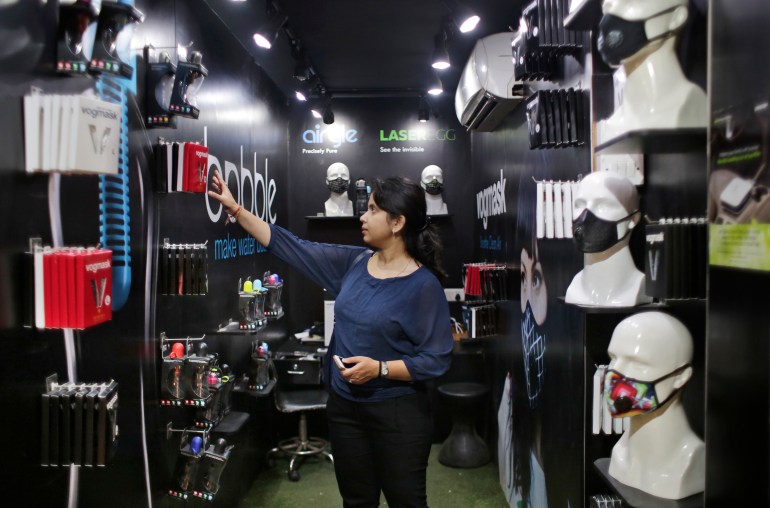
Well before the COVID pandemic hit, she watched as her nieces ran around her favourite park in the chilly January air, with little masks decorated with cartoon characters on their faces – completely oblivious to the fact that they were wearing them.
“It was just so heartbreaking because we were there in my favourite park in Delhi where I had grown up jumping all over the place and here we have my nieces, who are running around with masks,” she says. “That’s not how a childhood should be spent, you know?”
Neha knows mothers who will check the air quality first thing in the morning to decide whether their children can go out to play. And for people who can afford them, air purifiers are placed in every room of the house.
Even then, these precautions don’t always feel like enough. “Just stepping out [of your house], you’re increasing your exposure.”
But, for many, staying home is just not an option. “If you’re selling something on the street … your job requires you to be out of the house, [so] you will go out of the house,” she says. “It’s being described as the silent pandemic because it’s been killing people for years.”
Growing up, winters always felt romantic in Delhi, as the air grew still and a gentle fog settled over the 5,000-year-old city. But even back then, Neha realises, this air could have already been packed with pollutants.
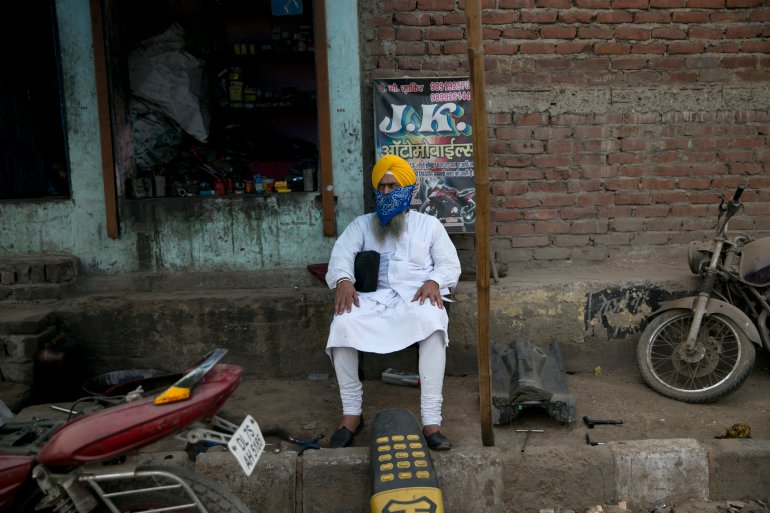
While making her film, Neha saw just how devastating the effects of air pollution could be. She met 26-year-old Priyanka, who had been diagnosed with stage-four lung cancer just a few months prior to filming. A non-smoker with no family history of cancer, her doctor strongly suspects that her case was linked to air pollution. Curious, full of life, and deeply loved by her family and friends, she passed away less than a year after her diagnosis.
Another lung cancer patient – a mother in her mid-30s who was battling the disease when Neha contacted her to appear in the film – died before she could be interviewed.
Then there was Ashutosh Dikshit, a man in his late 50s who led a citizens’ body in Delhi and actively campaigned against air pollution. Around the time Neha was due to interview him for the film, he complained of shoulder and back pain. It turned out to be stage-four lung cancer. He died soon after.
With millions breathing deadly air, the reality is hard to grapple with. “It’s a passive act, right? You breathe air. You have no control over it and it can kill you,” Neha says.
And now with COVID, she says, “you have two killers in the air.”
As Neha poignantly points out at the end of her film, unless the government treats this as the emergency it is, millions will continue to risk their lives, just by breathing.
Stubble burning
The situation in Delhi is made significantly worse by its location in the heart of India’s agricultural region where stubble-burning is rife. Tens of thousands of farmers burn their left-over straw to clear the soil for the next crop.
The fumes pollute swathes of northern India and add to Delhi’s toxic haze, especially in September and October when low wind speed allows the smog to spread far and wide.
Government efforts to counter the problem have included banning the practice, and rewarding those who find alternatives. But little difference has been made.
Fighting for change
Twenty-year-old Siddhant Sarang studies at the University of Delhi and is founder of the youth-led climate organisation, Youth Frontliners. Delhi’s dire predicament inspired him to a life of environmental activism.
“My fears were doubled when I saw the government ignoring this important issue,” he tells me. “Air pollution, climate change or deaths due to them are not a big issue in the Indian political and policy discourse.”
Siddhant is studying for a history degree but says that Delhi’s dangerous pollution scares him. “Alright, so I’ll get a higher degree, but I could die living here,” he says. “So what do I do?
“You don’t only feel the pollution, you can touch it, it’s in your nose, it’s in your throat. If you drive any distance dust particles collect on your face like cement powder.”
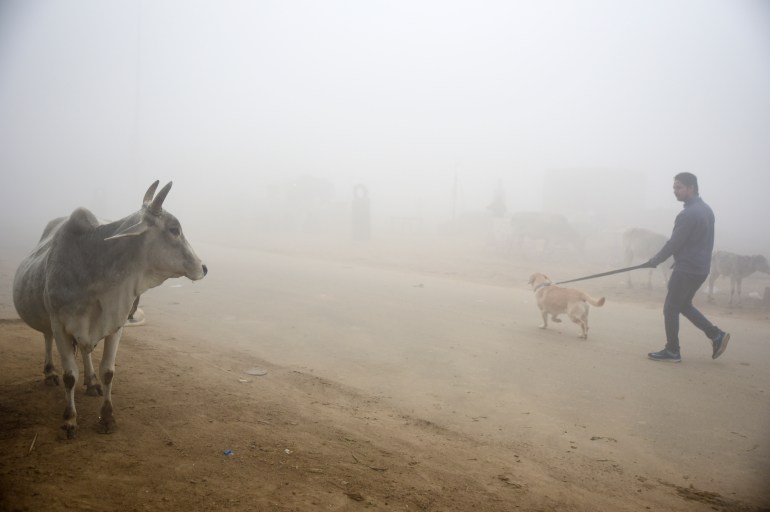
He says when people from other states of India come to the capital by train, they know when they have arrived in Delhi. “As soon as they see the smog they can tell they have entered the borders of the capital. Air pollution is now a symbol of Delhi.”
And it’s all the more dangerous this year with COVID-19 ravaging the country – studies have linked air pollution to higher coronavirus case numbers and deaths.
According to the State of Global Air 2020 report, in 2019, 116,000 infants in India died within the first month of being born, often a direct outcome of a mother’s exposure to air pollution during pregnancy. If you’re poor, there is no escape.
Sarang says at one point in 2019 the government contradicted its own research saying there was no Indian study that linked air pollution with the shortening of lifespans.
“But a study by the Indian Council of Medical Research has said precisely this, that pollution is making life expectancy in India go down,” he says.
“Do not ask where the government has failed, rather ask where the government has not failed.”
Taking action
Gopal Rai, Delhi’s environment minister, said in March that the city government has been successful in curbing pollution. “The Delhi government has consistently shown its administrative will to reduce air pollution in the city, due to which it has reduced by 15%,” he said in a statement.
He added that the government had brought in important policies on fuel change, tree planting and electric vehicles and is working on bio-decomposers to eliminate stubble burning.
The minister also said it’s up to the national government to do more to address the issue. “Governments must work together to come up with a viable, workable solution.”
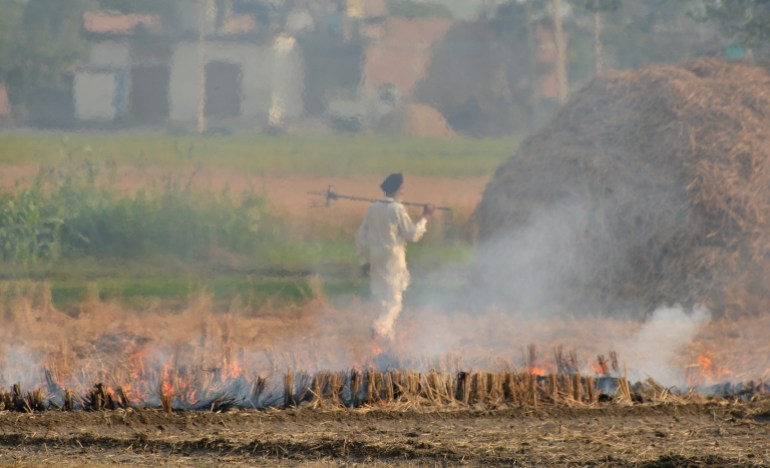
Phasing out
Across the world, the clarion call is for the phasing out of dirty power – particularly burning coal for electricity – and stepping up renewable supplies like wind and solar as quickly as possible. This will ease the burden of CO2 emissions that cause both climate change and air pollution.
But this is especially problematic for developing nations like India which have not had the beneficial legacy of two centuries of access to fossil fuels. Many would say it’s a question of economic justice.
But Delhi is projected to be the world’s most populated city by 2030, and as its population grows, so too does an environmental and health calamity, reflected in cities around the world.
There may be no vaccine for the pandemic of pollution but it’s a menace that can and must be beaten. Ask the 30 million residents of the Indian capital.